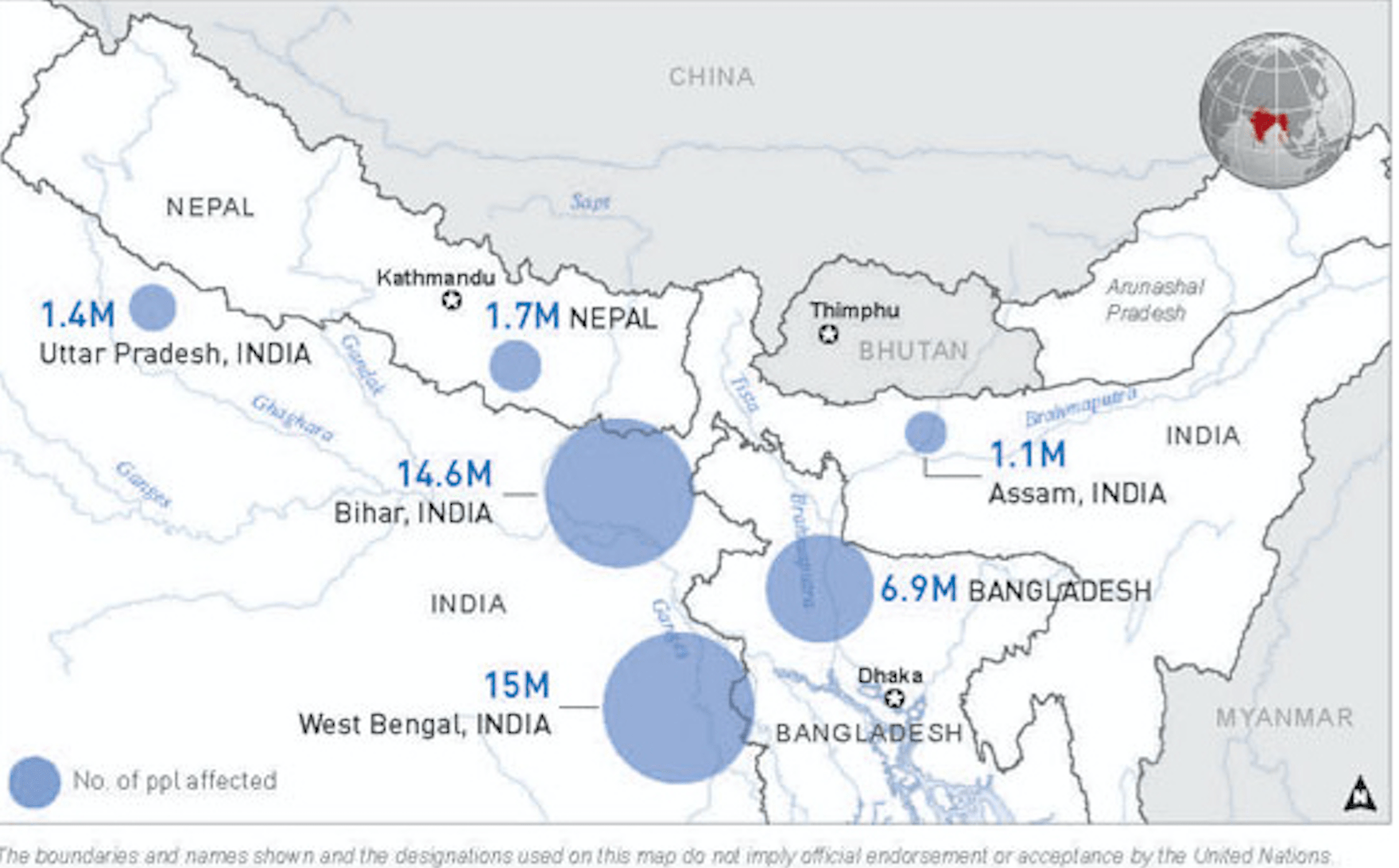As the US reels from the lasting affects of Hurricane Harvey, a historically powerful storm arriving at the peak of hurricane season, tens of millions of South Asians halfway around the world are also deep in Monsoon Season, which, this year, has also brought devastating rains.
Floods and landslides in northern India, Nepal and Bangladesh have affected 41 million people, according to estimates from the UN Office for the Coordination of Humanitarian Affairs, which is participating in relief efforts. More than a thousand people have been killed, and hundreds of thousands of buildings have been destroyed. Millions of people are displaced, waiting to return to flooded villages. Others are cut off from food and clean water.
The floods are already the worst in decades, and the rain is expected to continue. Monsoon season typically lasts through September.


There will be lasting impacts as well. The floods have destroyed crops, and, with them, farming economies. Many of the affected areas were already poor, and will likely see a sharp rise in unemployment in the months ahead. Some parts of Nepal that were affected are also still struggling to recover from the 2015 earthquake that struck the country.
Indian Prime Minister Narendra Modi pledged to put together a relief fund of $78 million — though the cost of recovery is expected to be higher.
The US, meanwhile, is taking stock of the damage sustained in Texas as the remnants of the storm move north and east, making landfall for a second time of Louisiana. Already, Harvey has earned the title of worst rainstorm in US history. At least 30 people have been killed by the storm and the flooding that it brought. Tens of thousands of homes are flooded and 30,000 are expected to need shelter.
Recovery could cost roughly $200 billion — more than it cost to rebuild New Orleans after Hurricane Katrina in 2005. Because Harvey struck at the heart of the US’s petrochemical industry, there’s also a good chance that, as flood waters recede, they will lead behind an enduring environmental disaster.
Both historic weather events are illustrative of the kind of disasters that will become increasingly common as climate change advances, affecting everyone — but with particularly devastating affects for poor communities in developing countries. Low-lying Bangladesh, for instance, is beset by annual floods and threatened by steadily rising sea levels. Roughly one third of the country, following this year’s monsoon season, is currently underwater.
Aid groups are asking that donors not forget South Asia amid media focus on Texas. “What is challenging is that this is just another disaster on top of four famines in Africa and the Middle East, a cholera crisis in Yemen, protracted emergencies in Syria, Afghanistan,” Jono Anzalone, vice president of international services at the American Red Cross, told NPR. “Donor fatigue is a significant concern. When you have this many simultaneous disasters, it’s hard to draw attention to any particular one.”
A man carries his cattle on his shoulder as he moves to safer ground in Saptari,Nepal,12 August 2017. #nepalflood #epaphotos pic.twitter.com/Cb6iOMOE3p
— Narendra Shrestha (@Narendraphoto) August 12, 2017
